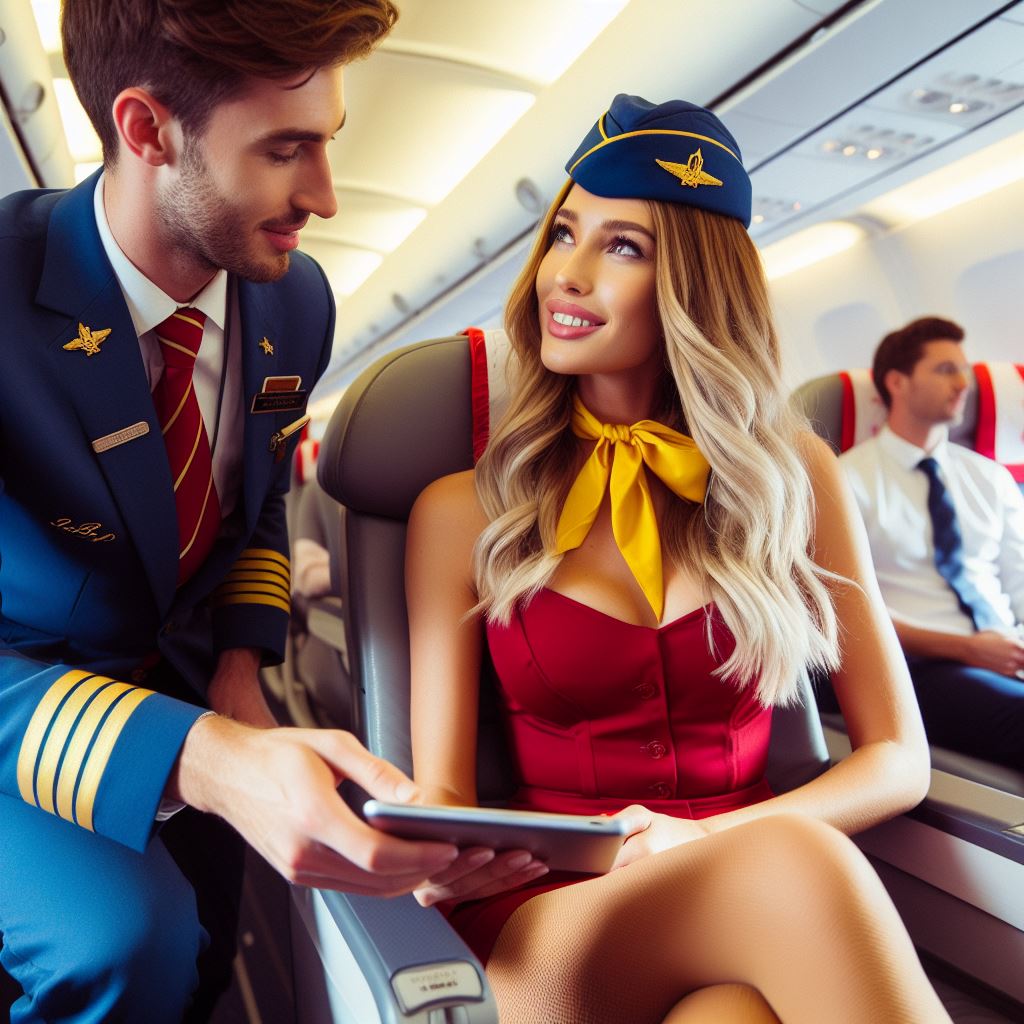Introduction
Australia’s vibrant tourism scene underscores the importance of catering to passenger needs effectively.
This blog post seeks to glean valuable insights from professionals nationwide.
In the realm of hospitality, meeting passenger needs is paramount for ensuring a seamless and enjoyable travel experience.
As such, understanding and proactively addressing these needs are fundamental for success within Australia’s bustling tourism industry.
To this end, professionals hailing from various sectors across the country have generously shared their expertise and insights.
These insights serve as invaluable guidance for businesses and service providers, offering practical tips and strategies for exceeding passenger expectations.
By embracing these recommendations, hospitality establishments can elevate their standards and foster unparalleled customer satisfaction.
From personalized service to anticipatory assistance, the collective wisdom shared by industry professionals empowers businesses to tailor their offerings to suit the diverse needs and preferences of travelers visiting Australia.
By heeding these insights, businesses can create memorable experiences that leave a lasting impression on passengers, thereby solidifying their reputation as top-tier providers within the Australian tourism landscape.
Read: Warehouse Management Insights for Analysts
Understanding Passenger Needs
Define passenger needs and their significance in the transportation industry
Passenger needs refer to the specific requirements and expectations that individuals have when using transportation services.
These needs are crucial in the transportation industry as they directly impact customer satisfaction and the success of businesses involved in providing transportation services.
The diverse range of passenger needs, including comfort, safety, accessibility, and entertainment
- Comfort: Passengers prioritize a comfortable travel experience, including seating arrangements, temperature control, and adequate legroom.
- Safety: Ensuring passenger safety is of utmost importance, including implementing safety measures such as seat belts, airbags, and working emergency exits.
- Accessibility: It is vital to cater to passengers with disabilities or special needs by providing ramps, elevators, and designated seating areas.
- Entertainment: Passengers value access to entertainment options during their journey, such as in-flight movies, music, or Wi-Fi.
Impact of fulfilling passenger needs on customer satisfaction and repeat business
- Customer Satisfaction: Meeting passenger needs leads to enhanced customer satisfaction, resulting in positive reviews and recommendations, ultimately attracting more customers.
- Repeat Business: Satisfied passengers are more likely to choose the same transportation service provider for future travel needs, leading to increased repeat business.
- Competitive Advantage: Fulfilling passenger needs sets businesses apart from their competitors, making them the preferred choice in a crowded transportation industry.
By understanding and addressing passenger needs, transportation businesses can gain a competitive edge and build a loyal customer base.
The transportation industry is evolving rapidly, but meeting passenger needs remains essential.
Comfort, safety, accessibility, and entertainment are key considerations.
By prioritizing these factors, transportation businesses enhance customer satisfaction, loyalty, and competitiveness.
Read: Supply Chain Analysts and IoT Integration
Tips for Navigating Passenger Needs
Conduct research and surveys to gain insights into passenger preferences
Importance
Gathering data on passenger needs is crucial to understand their preferences and provide a personalized experience.
Methods
Questionnaires, interviews, and online feedback forms are effective ways to collect passenger insights and preferences.
Train staff to effectively address and respond to passenger needs
Importance
Customer service skills and empathy are essential for staff to effectively address passenger needs and create a positive experience.
Examples
Staff should be prepared to assist passengers in situations like flight delays, lost luggage, or medical emergencies.
Continuously improve and upgrade passenger amenities and facilities
Significance
Modernizing amenities is essential to adapt to changing passenger preferences and enhance their overall experience.
Examples
Installing charging points and improving onboard entertainment systems are examples of upgrading passenger amenities.
Utilize technology to enhance the passenger experience
Benefits
Mobile apps offer convenient ticketing, real-time updates, and personalized recommendations, enhancing the passenger experience.
Advantages
Data analytics provide valuable insights into passenger preferences, enabling airlines to tailor their services accordingly.
Read: Women in Aviation: Aussie Pilots Breaking Barriers
Your Personalized Career Strategy
Unlock your potential with tailored career consulting. Get clear, actionable steps designed for your success. Start now!
Get Started
Explore Further: Flight Attendant Training: What to Expect in Aus
Case Studies: Successful Approaches in Australia
Australia has seen several transportation companies excel at addressing passenger needs by implementing innovative initiatives.
These efforts have had a significantly positive impact on customer satisfaction and loyalty.
Examples of Transportation Companies Excelling in Australia
- The CityRail network in Sydney stands out for its inclusive design, ensuring accessibility for passengers with disabilities.
- Airline company Qantas has implemented tailored services, such as personalized inflight entertainment options, to enhance the passenger experience.
- Uber has revolutionized the transportation industry by providing a convenient and efficient platform for customers to book rides.
CityRail Network: Inclusive Design
The CityRail network in Sydney has made significant efforts to improve accessibility for passengers with disabilities.
They have implemented inclusive design principles across their stations and trains, ensuring that everyone can access and use their services without barriers.
This includes the installation of ramps, lifts, and tactile guidance systems.
Their approach to inclusive design has not only made transportation more accessible but has also positively impacted customer satisfaction.
Passengers with disabilities now have the freedom to travel independently, enhancing their overall experience and building loyalty towards the CityRail network.
Qantas: Tailored Services
Qantas, one of Australia’s leading airlines, has recognized the importance of providing tailored services to meet individual passenger needs.
They have invested in personalized inflight entertainment systems that offer a wide range of options to suit different preferences.
This initiative has had a significant positive impact on customer satisfaction and loyalty.
Passengers appreciate being able to choose their preferred movies, TV shows, and music during their flights, which enhances their overall travel experience.
By catering to individual preferences, Qantas has successfully differentiated itself and built a loyal customer base.
Uber: Convenient and Efficient Transport
Uber has transformed the transportation landscape in Australia by introducing a convenient and efficient ride-hailing platform.
Their user-friendly app allows passengers to book rides with just a few taps on their smartphones.
This approach has revolutionized the way people travel, providing a seamless experience that saves time and eliminates the hassle of traditional taxi services.
Customers appreciate the convenience and reliability of Uber, leading to high levels of satisfaction and loyalty towards the brand.
To sum it up, transportation companies in Australia have excelled in addressing passenger needs by implementing various initiatives.
The CityRail network’s inclusive design, Qantas’ tailored services, and Uber’s convenient platform are just a few examples of successful approaches.
These initiatives have had a significant positive impact on customer satisfaction and loyalty, establishing these companies as leaders in the industry.
Read: E-commerce and Supply Chain Analysis
Discover More: Interview: A Veteran Aussie Logistics Manager
Explore Further: Train Driver Health & Safety in Australia
Conclusion
A successful airline experience hinges on understanding and meeting passenger needs effectively.
By adopting the recommendations put forth by Australian professionals, airline companies can elevate the passenger experience and foster lasting customer loyalty.
To summarize, key tips encompass actively listening to passengers, promptly addressing their concerns, delivering personalized service, and maintaining a pristine and inviting environment.
It’s imperative for readers to integrate these strategies into their operations to not only meet but surpass passenger expectations.
By doing so, airlines can set themselves apart from competitors and create memorable journeys for their customers.
In closing, grasping and navigating passenger needs stands as a cornerstone for any airline’s success.
By heeding the guidance of Australian experts, airlines can cultivate positive rapport with passengers, ultimately leading to heightened satisfaction and loyalty among their clientele.




